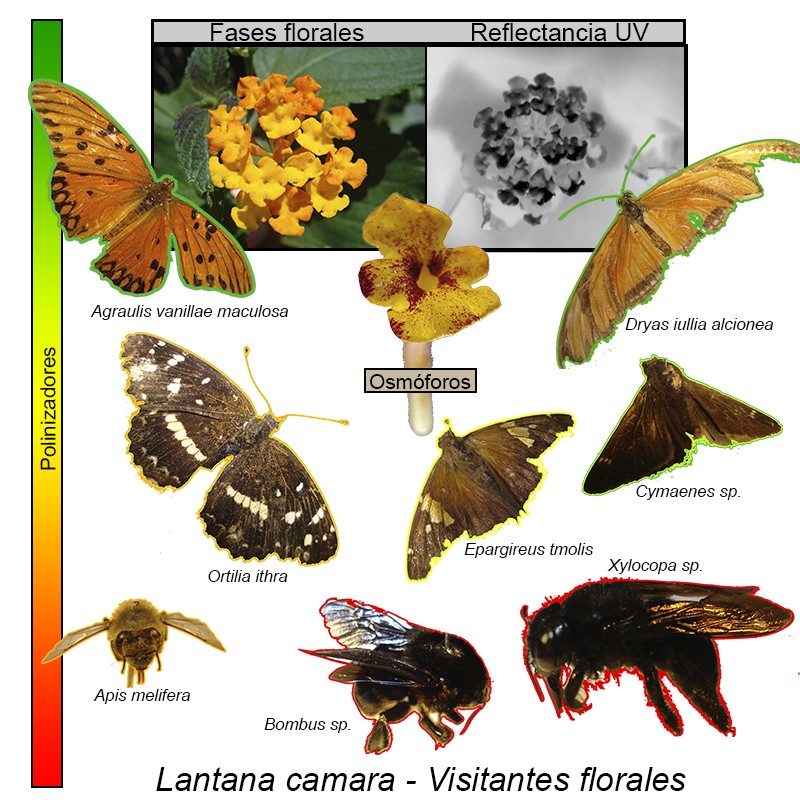Reproductive system and floral biology of Lantana camara (Verbenaceae) in a riparian population of the Río de la Plata river
DOI:
https://doi.org/10.31055/1851.2372.v54.n1.23578Keywords:
Lantana camara, facultative xenogamy, Lepidoptera, reproductive success, floral phases, UV reflectance pattern, osmophores.Abstract
Background and aims: The floral biology of Lantana camara, a native species of Central and South America and invasive cosmopolitan, still presents poorly-known and controversial aspects. The aim of this work was to determine the reproductive system, floral attributes and pollinators in a coastal population of Río de la Plata.
M&M: The usual methods in pollination biology were employed. The study was performed in Ciudad Universitaria, Ciudad Autónoma de Buenos Aires, Argentina, during the spring of 2012.
Results: The flowers emit mild and sweet odor by osmophores arranged around the floral tube entrance, in coincidence with the absorption-reflection pattern in the UV spectrum. Nectar accumulates in the floral tube, probably secreted by trichomes situated at the petals base. During anthesis, three floral phases succeed, distinguished by changes in corolla coloration, aroma intensity, reward quantity and anther and stigma maturity. The psychophilous flowers were visited by diurnal lepidopterans and by hymenopterans, dipterans and hummingbirds. The highest reproductive success occurred with free pollination; the self-incompatibility and P/O indexes showed partial self-compatibility and facultative xenogamy, respectively.
Conclusions: L. camara is capable of successful spontaneous self-pollination, probably one reason of its global spread. Due to their activity on the flowers, visited floral phase, pollen load and frequency of visits, only the butterflies Agraulis vanillae maculosa, Dryas iullia alcionea and Cymaenes sp. would pollinate in this site.

Downloads
Published
Issue
Section
License
Provides immediate and free OPEN ACCESS to its content under the principle of making research freely available to the public, which fosters a greater exchange of global knowledge, allowing authors to maintain their copyright without restrictions.
Material published in Bol. Soc. Argent. Bot. is distributed under a Creative Commons Attribution-NonCommercial-ShareAlike 4.0 International license.




